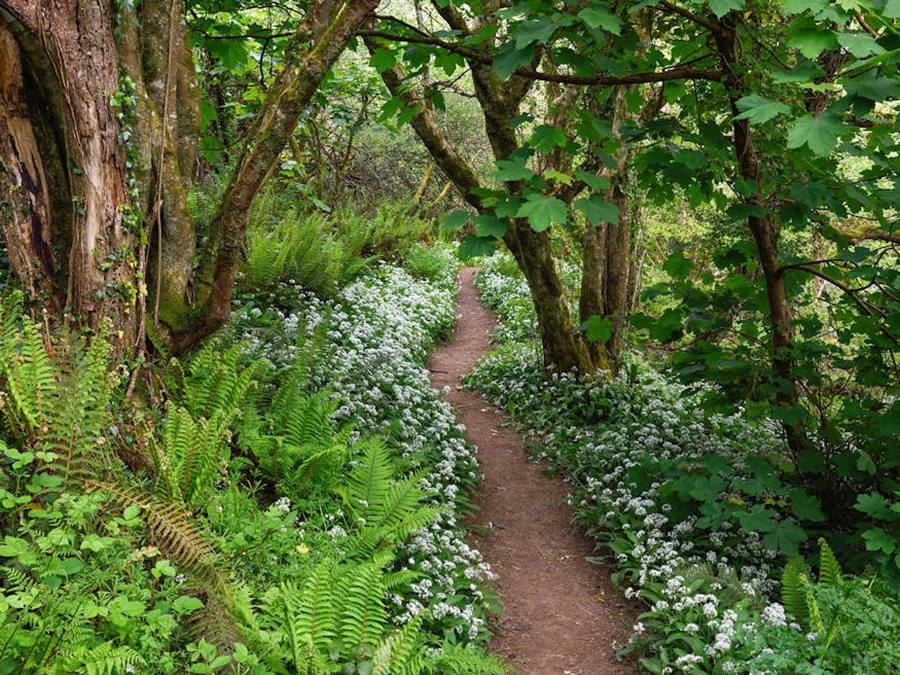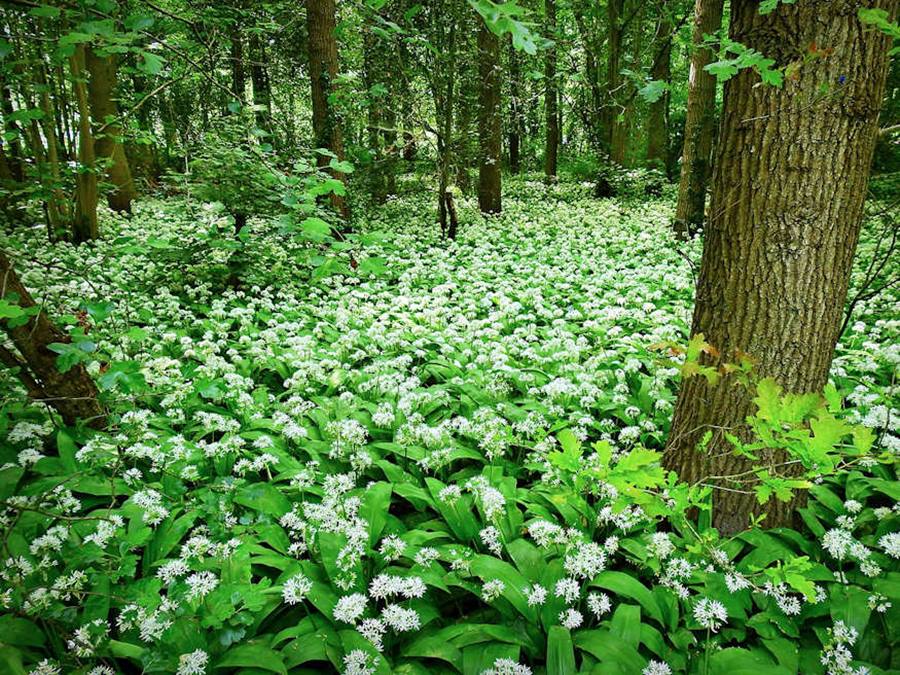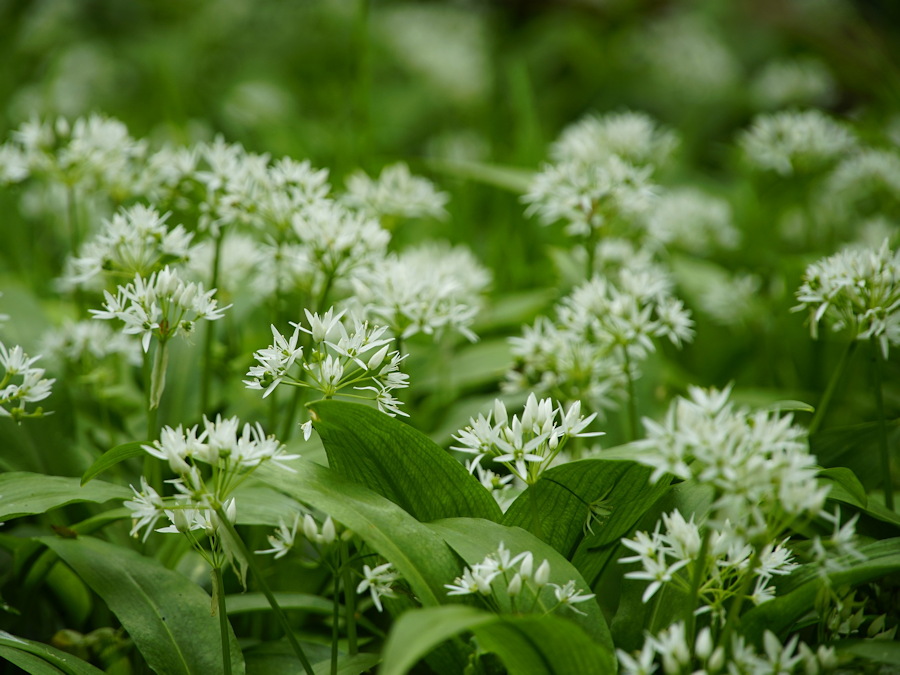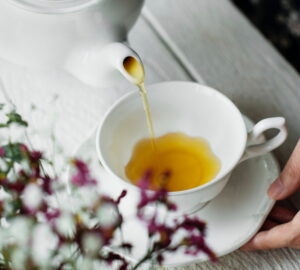Allium ursinum, commonly known as wild garlic, a beloved springtime treat and a versatile herb, not only thrives in nature’s nooks but also can find a home in your very own garden. This perennial gem, with its garlic-infused aroma and a cornucopia of health benefits, is a must-have for hobby gardeners. Join us on a journey to discover the secrets of cultivating this captivating herb in your backyard oasis.
Cultivating Wild Garlic: A Guide for Gardeners
Finding the Perfect Spot
In the wild, you’ll spot wild garlic nestled at the base of damp, partly shaded forests, dancing along the edges of streams and gracing open meadows. To recreate its natural habitat in your garden, seek out a sunny to partially shaded spot. While wild garlic enjoys warm weather, it shies away from direct sunlight. Ensure your soil is rich in humus and nutrients, with excellent drainage. A cozy mulch layer of autumn leaves or mature compost adds the finishing touch.
Getting to Know the Plant
Wild garlic’s distinctive sword-shaped leaves emit a robust garlic fragrance, a signature characteristic that makes it stand out. Its white flowers, arranged in umbrella-like clusters, enchant the senses from April to June. During the summer months, the leaves fade away, only to sprout anew the following year. Remarkably, the flowers and even the slightly peppery seeds are edible, making this plant a delightful addition to your culinary repertoire.

Propagation and Maintenance
Under favorable conditions, wild garlic is a vigorous spreader, forming a lush carpet of green. After the blooming spectacle, you can easily propagate it by dividing the stems or transplanting a few plants to other areas of your garden. Plant them at a depth of approximately 15 cm, with a spacing of 15-20 cm between each.
Gardening Harmony
While wild garlic may not be the showiest plant in your garden, its ephemeral green presence can be complemented by other flora, such as plantain lilies, ferns and false goat’s beard. This thoughtful pairing ensures there are no barren patches, allowing your garden to flourish in every season. Should you choose to propagate wild garlic by sowing seeds, gather them in July and sow directly into the garden. Patience is key, as seed germination takes a considerable amount of time.

Beware of Imposters: Lily-of-the-Valley
In your wild garlic gardening adventures, exercise caution not to confuse it with its less-friendly doppelgänger, the poisonous lily-of-the-valley (Convallaria majalis). While their leaves may bear a resemblance, there’s a key distinction. Wild garlic emits its unmistakable garlic aroma when you rub its leaves, and its foliage tends to grow in clusters. In contrast, lily-of-the-valley leaves stand individually and do not have the characteristic garlic scent.
When it comes to their flowers, wild garlic produces delicate white blossoms that form in umbrella-like clusters during the spring. In contrast, lily-of-the-valley displays fragrant, bell-shaped white flowers typically in May, which also serve as a visual differentiator.
A Rich History and Health Benefits
Even in ancient times, both the Romans and the Celts recognized the healing prowess of wild garlic. Its name is said to be derived from the belief that bears, upon awakening from hibernation, eagerly seek out wild garlic leaves for their nutritional value.
Wild garlic is a nutritional powerhouse. It boasts allicin, an organic sulfur compound responsible for its unique taste and aroma. Additionally, its leaves are packed with vitamin C, minerals like iron, magnesium, calcium and manganese. Consuming wild garlic can contribute positively to cholesterol levels, blood pressure and overall heart health. Its antibiotic and detoxifying properties stimulate digestion and invigorate the appetite, making it not just a garden treasure but a health elixir too.

Harvesting and Culinary Tips: Bringing Wild Garlic to Your Table
Harvesting wild garlic is a delightful journey in itself, but what you do in the kitchen can truly elevate your culinary adventures. When plucking leaves, opt for the young, tender ones as they offer the most delicate flavors. Rinse them thoroughly to remove any dirt or insects. Wild garlic can be used fresh in salads, sandwiches, or as a garnish, imparting a mild garlic kick to your dishes. You can also blend it into pesto, create aromatic soups, or infuse oils for a burst of flavor. Remember, moderation is key; a little wild garlic goes a long way in transforming ordinary recipes into extraordinary delights. So, experiment, savor and relish the unique taste of your homegrown treasure.
Cultivating Wild Garlic: A Bounty of Flavor and Health
As you embark on your wild garlic gardening journey, you’re not only embracing a flavorful addition to your culinary adventures but also nurturing a plant with a rich history of medicinal benefits. By cultivating this aromatic herb in your garden, you’re not just creating a feast for the senses but also fostering a haven of health and vitality amidst your beloved plants. So, let your garden flourish with the magic of wild garlic, where every leaf whispers tales of flavor and well-being. Happy gardening!









